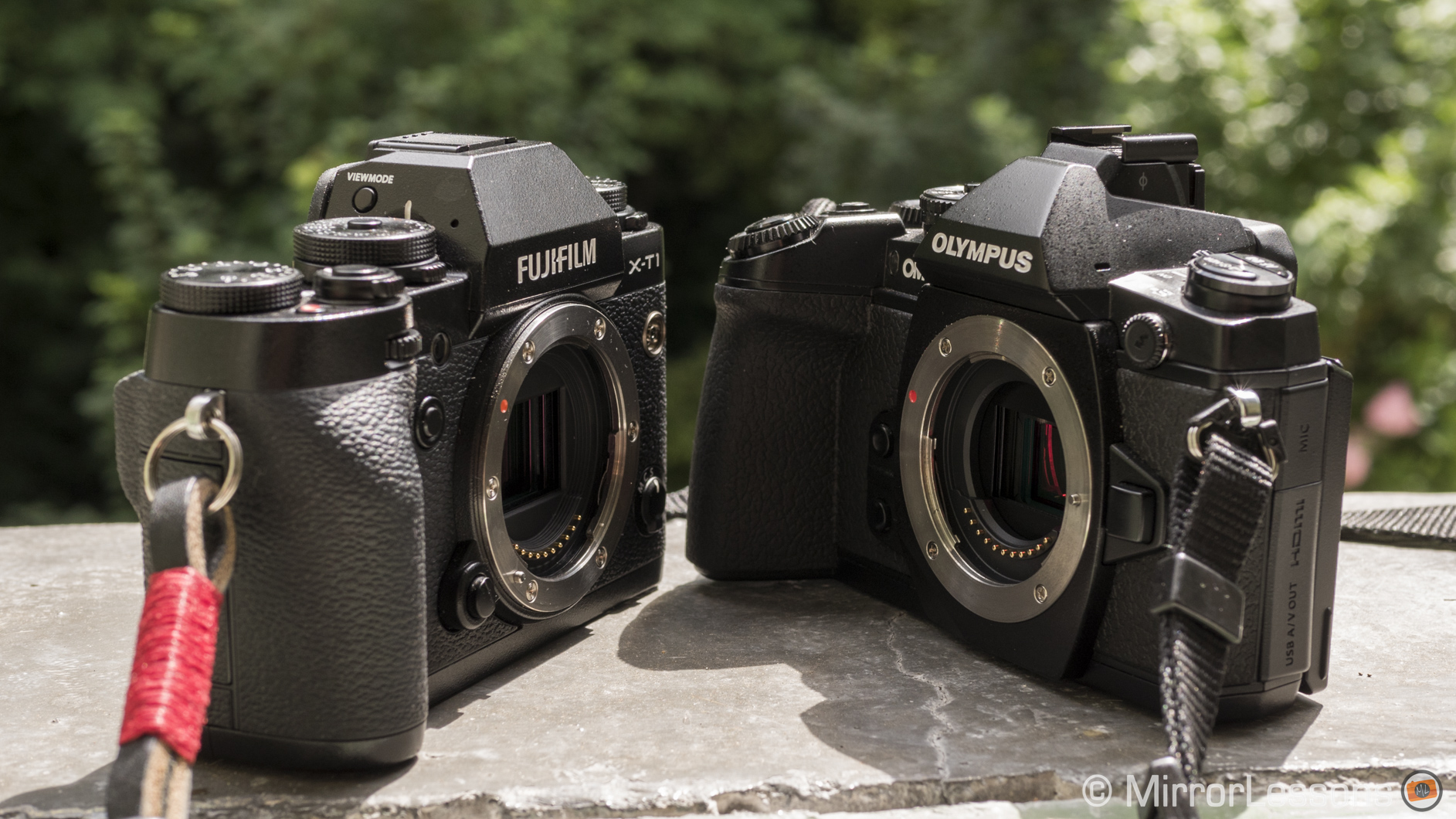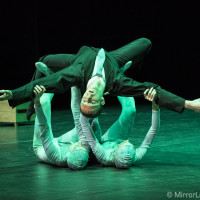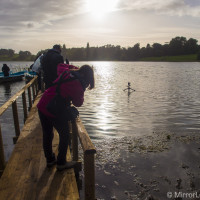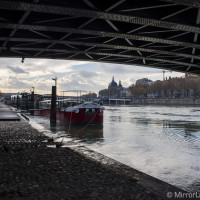While Nikon and Canon are the only viable competitors for main throne of the digital photography world (at least for now), the battle for the mirrorless throne is much more fascinating. There are many kingdoms (a.k.a. brands) trying to triumph by creating new gear (sometimes too much) in a contentious territory (market). While we could argue about the presence of too many cameras today (and let’s face it, we don’t need all of them), this rise in competition that emerged a few years ago has also brought about some interesting changes. One of them is that mirrorless cameras now have a more serious role, attracting not only the amateur or the enthusiast but also the professional.
Two of the most notable players in this game of mirrorless thrones are the Olympus OM-D E-M1 and the Fujifilm X-T1. The first comes from a company that greatly contributed to creating the mirrorless market in the first place. The E-M1 is the result of years of experience. The company created what is probably the first fully mature mirrorless camera aimed at both enthusiasts and professional photographers. The Fujifilm X-T1 is part of a younger system that has already shown tremendous potential. The X-T1 while not perfect is the most advanced X camera to date and proof that the Fuji X system could rapidly ascend the throne. If we put these two advanced cameras face to face, only an epic battle could come of it.
As always, please note that with our comparison articles, our main goal isn’t to state which model is inherently better than the other. In fact, I’ll say it right up front: both are excellent cameras with very few flaws. Rather, we’d like to help you understand which camera is better suited to you and your style of photography. Do also keep in mind that you are more likely to find informal galleries with pictures taken with both cameras rather than direct image comparisons. On that note, let’s start comparing!
Update: check out the second episode of our Game of Mirrorless Thrones series featuring the OM-D E-M1 vs. the Panasonic GH4!
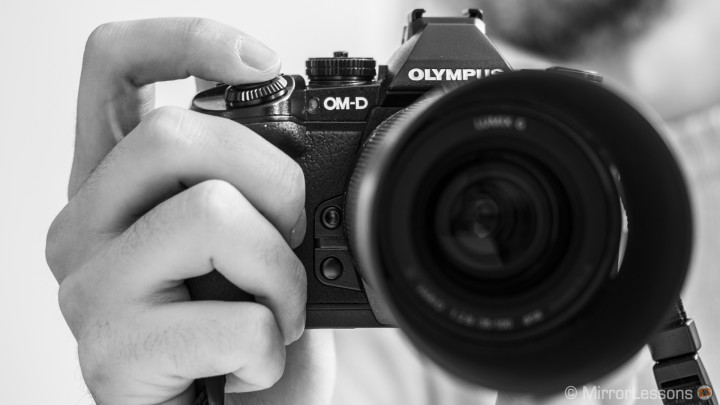
OM-D E-M1
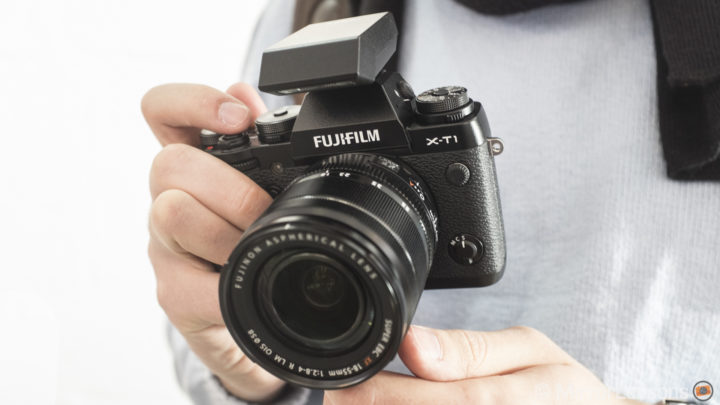
Fuji X-T1
Main Specs
The main difference between the two cameras lies in the sensor.
The OM-D E-M1 is the Olympus flagship camera and features a 16 MP Micro Four Thirds sensor with no AA filter. The TruPic VII image processor is capable of minimising moiré.
The Fujifilm X-T1 features a larger APS-C CMOS sensor with proprietary X-Trans technology. It lacks an AA filter and has a diverse color filter array that reduces the occurrence of moiré.
Sensor size aside, the two cameras actually share many similar capabilities.
They are both weatherproof, have a fast continuous shooting speed and have been built with professionals in minds. They sport the two best EVFs on the market, have lots of customisable buttons and dials and possess very good ergonomics. Their lens systems offer many high quality prime and zoom lenses.
[stextbox id=”text-box-toc” caption=”Specs list” collapsing=”true” collapsed=”false”]
OM-D E-M1
- Sensor: 16.3 megapixel 4/3 Live MOS Sensor
- Lens system: Micro Four Thirds interchangeable lens system
- ISO Sensitivity: 200 – 25600 ISO (extended to 100)
- Continuous shooting: 10 fps (AF-S), 9 fps (AF-C)Autofocus: Contrast / Phase detection AF (81 contrast detection points, 37 phase detection points)
- Internal Stabilisation: Yes (5 axis image stabilisation)
- Viewfinder 2.360k electronic VF-4 with 0.74x magnification and frame rate up to 120fps
- LCD Screen: Tiltable 3″ LCD touch sensitive monitor, approx. 1,037k dots
- Movie recording:: Full HD up to 30p
- Weatherproof: Yes
- Sensor Cleaner: Yes
- Manual focusing: peaking, magnification
- Built-in Flash: No (but an external flash is provided with the camera)
- Extra Features: Built-in WiFi, Art Filters, Live Time
- Dimensions: 130.4 x 93.5 x 63.1mm
- Weight: 497g (including battery and memory card)
Fuji X-T1
- Sensor: 16.3 megapixels APS-C X-Trans II CMOS Sensor
- Lens System: X Mount interchangeable lens system
- ISO Sensitivity: 200 – 6400, extendable to 100, 12800, 25600 and 51200 (JPG only)
- Continuous shooting: 8 fps (AF-S and AF-C)
- Autofocus: Contrast / Phase detection AF (40 contrast detection points, 9 phase detection points)
- Internal Stabilization: No
- Viewfinder: 2,360k electronic Oled VF with 0,77x magnification and constant 60fps
- LCD Screen: 3″ LCD monitor, approx. 1,040k dots
- Movie recording: Full HD up to 60p
- Weatherproof: Yes
- Sensor Cleaner: Yes
- Manual focusing: peaking, digital split image, dual view, magnification
- Built-in Flash: No (but an external flash is provided with the camera)
- Extra Features: Built-in WiFi, Motion Panorama, Multiple Exposure
- Dimensions: 129.5 x 89.8 x 46.7mm
- Weight: Approx. 440g (including battery and memory card)
[/stextbox]
Ergonomics and Design
The E-M1 and the X-T1 feature well-thought-out designs that were both inspired by old SLR film cameras.
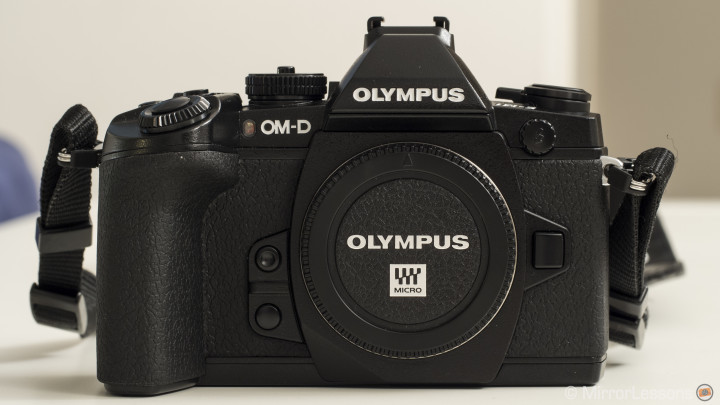
We consider the E-M1 design quite attractive, and even more importantly, extremely functional. It basically resembles the E-M5 (which was based on the old Olympus SLR design) with the external HLD-6 landscape grip attached.
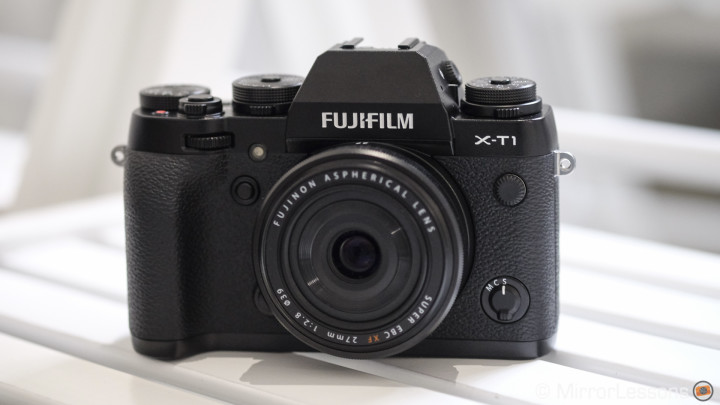
The X-T1 is based on the Fujica SLR film camera. It features manual dials and controls such as ISO, shutter speed and exposure compensation which make the camera look like a true copy of an old film SLR camera, also owing to its large EVF in the center.
Both cameras are made of magnesium alloy and both builds are very solid.
Olympus and Fujifilm have also started to build weather sealed lenses (Olympus has a few more right now) to allow these cameras to shoot in the most extreme weather conditions. And when it comes to ergonomics, both size and weight are similar but…

The E-M1 is slightly larger (a few millimetres really) and has a more pronounced grip that makes the camera more comfortable to hold and use.

The X-T1 has a less pronounced grip that is still enough but holding the camera perfectly may require an additional landscape grip (although this can be a very personal feeling).
Functionality & Ease-of-use
Both cameras have lots of intuitive functions and customisable buttons and dials. They have both been designed to make user operation as quick and efficient as possible.

The E-M1 has several buttons and dials that let you select the main settings very quickly. They can be accessed from the OK button as well as from the dedicated buttons, the six function buttons, the function lever and the arrow pad. Plus, every function accessed with one of these buttons can be controlled by the two main dials, which are naturally placed where your finger and thumb rest. There are also two function buttons at the front next to the grip that can naturally be reached by your middle finger. This makes all the operations very straightforward and quick.
The E-M1, as with all Olympus MFT cameras, has a more complex menu system than Fujifilm cameras. I can guarantee you’ll find certain options placed in sub-menus where they don’t really belong. However, as with anything, it won’t take long for you to get used to the layout of the menu.
I have used this camera for months now and I still cannot find a single flaw in its design or button/dial layout. The E-M1 is one of the most customisable and practical cameras I’ve ever used.
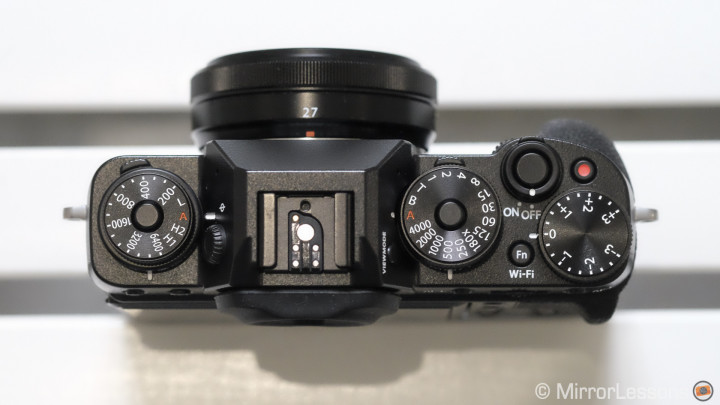
The Fuji X-T1 is certainly one step forward. The choice to give it an SLR design was not solely for the sake of aesthetics but also for functionality. It has many external dials that offer quick access and total manual control without the need to enter a single menu. It features an ISO dial, shutter speed and exposure compensation dial and different sub-dials that allow you to quickly change metering and drive mode. The button on the front, the rec video button and the four arrow pads on the back can be customised as you wish. Other important settings including film simulation modes can be accessed with the Q button.
The menu is also simple to navigate even though some options can be difficult to find. I struggled for two days before finally being able to figure out how to turn off the magnification function that activates automatically when using manual focus and turning the focus ring.
Whereas the customisation is very good, some buttons and the two little dials on the front and back are too small and hard to reach. Especially the arrow pad is hard to feel and find with your thumb if you’re looking elsewhere and so far it has been one of only big complaints from its users. Moreover, the two lock buttons on the ISO and shutter speed dials could have been more clever. You don’t have the freedom to lock the dials when you wish. The ISO dial always requires that the unlock button be pushed in order to change the ISO values, while with the shutter dial you only need to press it to move it out of A (automatic) position. But these last remarks are very small complaints.

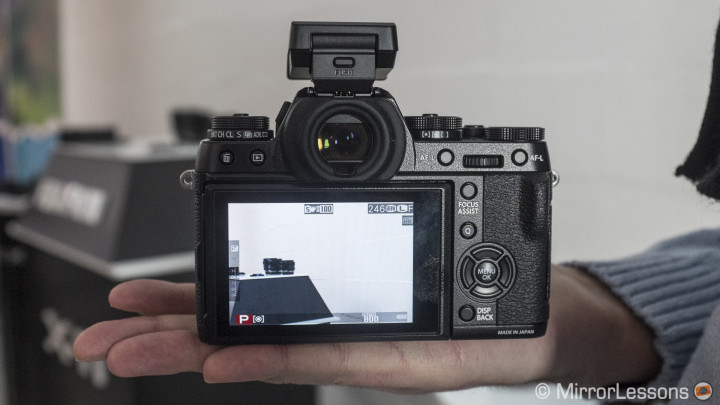
Both cameras feature a very detailed LCD screen and the two best EVFs on the market as of today.
The E-M1 has a built-in EVF with 100% field of view, 2.36-million dots, 0.74x magnification and a 0.032s time lag. It has lots of detail, brightness, a fast refresh rate, good colour accuracy and is large. Its Auto Luminance function is also very useful. The frame rate can be set to high mode but it will drain more battery power and also result in the loss of resolution. In low light conditions, the frame rate tends to decrease considerably.
The touch LCD of the E-M1 is about as good as you’re going to get. You can tilt it 80 degrees upward and 50 degrees downward but it doesn’t flip from side to side.
The X-T1 EVF is simply the best electronic viewfinder I’ve ever used. I already thought the Olympus VF-4 was great but the EVF built into the X-T1 is actually the first I would feel confident enough using to focus manually without any MF assist. It is bigger with a 0.77x magnification and has a time lag of only 0.005s! It shares the same resolution (2.36 million dots) but has a constant refresh rate (60fps) that doesn’t change in low light conditions. The only downside of this is that lots of color noise can appear in low light conditions but it has never bothered me much.
The LCD screen on the X-T1 is also excellent. It can tilt up and down but it isn’t a touch screen.
Image Quality
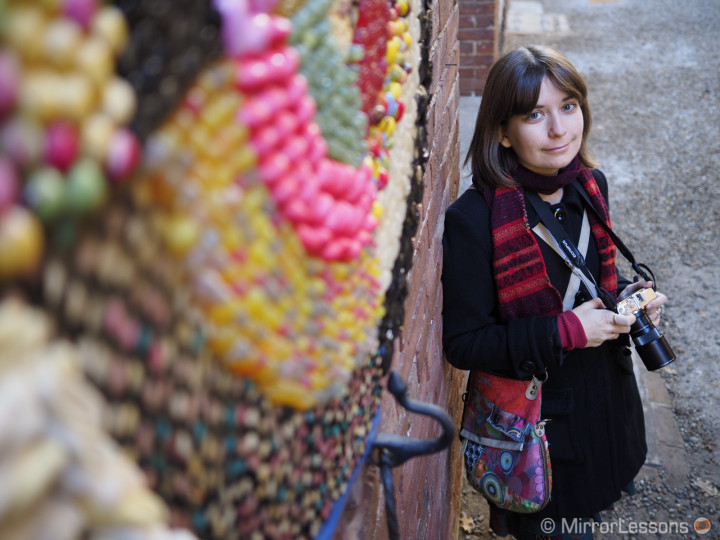
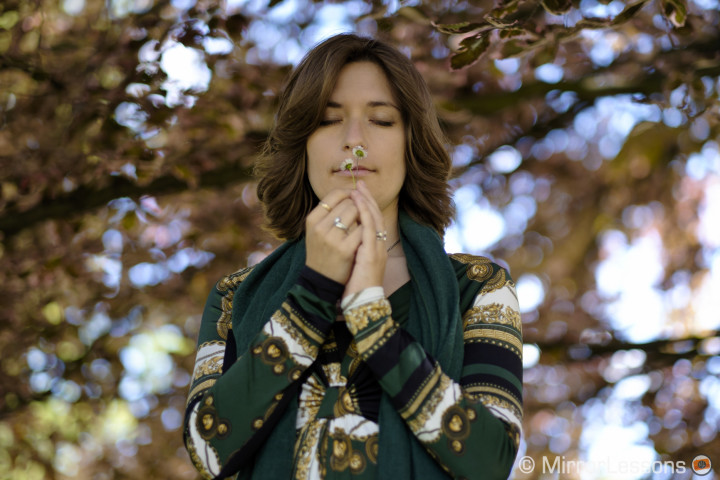
From a general and real world point of view, I would say that the differences between the Micro Four Thirds sensor and the Fuji APS-C X-Trans sensor are not big.
What I mean by this is that they are both usable in various situations and both can give you the image quality you need. Certainly there are differences that can lead you towards one or the other.
The Micro Four Thirds sensor of the E-M1 is smaller and has some limits compared to larger sensors. While I haven’t had any real problems raising the ISO or having enough flexibility in post production with the RAW files, due to its nature, the results can be less “clean” than other large sensor cameras.
The Fuji X-trans sensor is in my opinion one of the best APS-C sensors currently on the market. Its quality in terms of colour, dynamic range and noise at high ISO levels isn’t far off that of a full frame sensor.
There isn’t a real difference in terms of pure sensitivity and both cameras have similar performance regarding ISO sensitivity. The difference is in how noise is managed at high ISO levels.
The OM-D E-M1 has a native ISO sensitivity that goes up to ISO 5000. Its extended ISO can go up to 25600 (both RAW and JPG). Personally I find it usable up to ISO 3200 and ISO 6400 if the situation is critical. From 12800 ISO the loss in detail becomes more prominent.
The Fuji X-T1’s native ISO sensitivity goes up to 6400 ISO. Its extended ISO settings can go up to 51200 but in JPG only. With the X-T1 I haven’t had any issues pushing its ISO to 6400 if I need (I often leave ISO to auto). Also the noise rendering is more fine and organic and looks less digital. I rarely use the extended ISO mainly because it is limited to JPG only.
Below you can find a direct comparison at high ISO between the two cameras. The E-M1 had the 25mm 1.4 while the X-T1 had the 35mm 1.4, so that I could work with the same equivalent focal length. I set the same aperture (5.6) and worked in aperture priority with a center weighted metering setting.
The cameras have very different metering. The X-T1 will tend to give a darker image while the E-M1 will set a slower shutter speed and have a perfectly exposed image. So I used the exposure compensation on the X-T1 to match the same exposure. There’s nothing wrong with either metering system, they just work differently. I slightly adjusted the white balance on the E-M1 pictures as they were too yellow. This is partly due to the fact that I had the “warm colour” mode on for AWB.
And here is a second gallery with random pictures taken at high ISO.
In terms of colour rendition, we find another important difference between the two cameras.
The E-M1 has very good colour reproduction, something that I appreciate on the OM-D and Pen series. Colours are rich and warm. The JPG engine is also perfect for rendering those colours, and the AutoWB works well. The only little drawback that I currently find on all Micro Four Thirds sensors is the tendency to produce a slight magenta tint.
My favorite picture profiles are standard and vivid.
The X-Trans sensor is known for its unique colour rendering and the X-T1 is no exception. Colours look less digital in comparison to other digital cameras. I haven’t had enough experience with film to tell how close Fuji colours resemble film but they do look different. I particularly like how the warm tones are rendered (yellow and orange especially). Also the Auto WB works well even if it tends, like most digital cameras, to produce a yellowish tint with artificial lights.
The pictures profiles are called Film Simulation modes. My favorite is Astia for its delicate tone rendering. The monochrome profiles are also very good.
In the end, whether you prefer one colour to another is a question of personal taste.
The important thing to take away from this section is that both cameras can deliver great results. I can’t really tell which camera gives the better result here. They are just different. I can admit that I have an unshakeable faith in Fujifilm colours but that is my personal taste.
Below you can see an informal gallery taken with both cameras in similar “coloured” conditions during our trip to the Cinque Terre. All pictures were taken with the Vivid profile (Velvia for Fuji) except the third and fourth last (standard/provia profile).
When it comes to dynamic range, the X-T1 has an advantage.
The OM-D E-M1 has managed to surprised me more than once with its dynamic range, despite the smaller sensor. I would say that I managed to recover up to 2 stops of over exposure in some situations. Generally I would say you can recover up to 1 stop and a half. There is more room to recover details in the shadows at low ISO (two stops easily) but at high ISO beyond 800, the margin decreases. As with any other MFT camera, the sensor is stronger in the shadows than highlights so it is better to slightly underexpose the picture.
The Fuji X-Trans sensor has a very good dynamic range and it is certainly one of the strongest points of the sensor. I have managed to recover more than two stops in the highlights, and shadows are pretty strong too.
The X-T1’s dynamic range is certainly vaster than the E-M1’s but I’ve come to the conclusion that the difference is important only in situations where you like to work in high key (with lots of light and white in your image) . The X-T1 is stronger in the highlights but both are equally strong in the shadows.
Below I’ve included a quick “homemade” example to show you the main difference between the two cameras. The first two pictures have an overexposed sky. When I apply the same editing with Lightroom to both RAW files (-1ev and -80 for highlights recovery), you can see that the X-T1 version retains more details in the clouds.
This isn’t a in-depth test by far but the important thing to understand here is that both cameras can deliver great dynamic range if you set your camera in the right way. Again, with MFT it is better to underexpose while with the X-Trans sensor you have more room for recovery in the highlights.
Below you can see an informal gallery taken with both cameras in different conditions:
There is a little anomaly concerning the OM-D E-M1, which is that the camera produces too much noise for long exposure shots when the NR (or Dark Frame) is disabled.
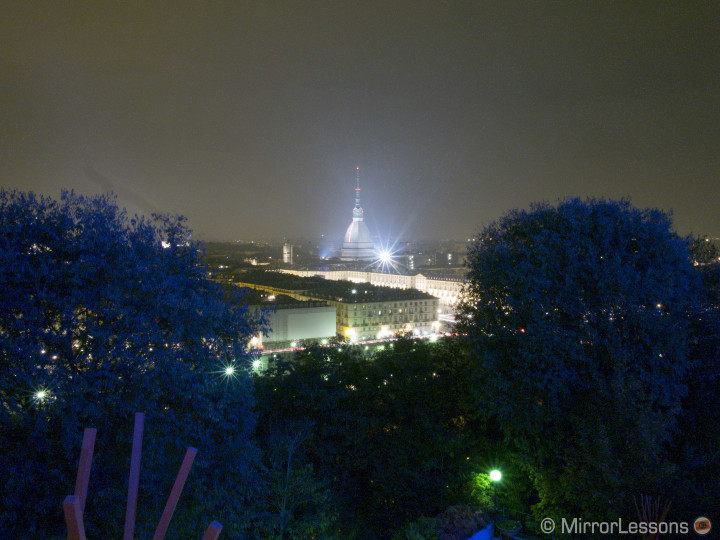
This isn’t a big issue for me as I don’t take lots of long exposure shots and if I need to, I can activate the NR filter without a second thought. But I can understand that for specific astrophotography shots, it can be a limit.
The only concern about the X-T1’s image quality is an issue with green colours reported by several users with different X-Trans sensor cameras. Apparently the rendering of green tints (like bushes, leaves…) results in a loss of detail and produces some sort of watercolour effect.
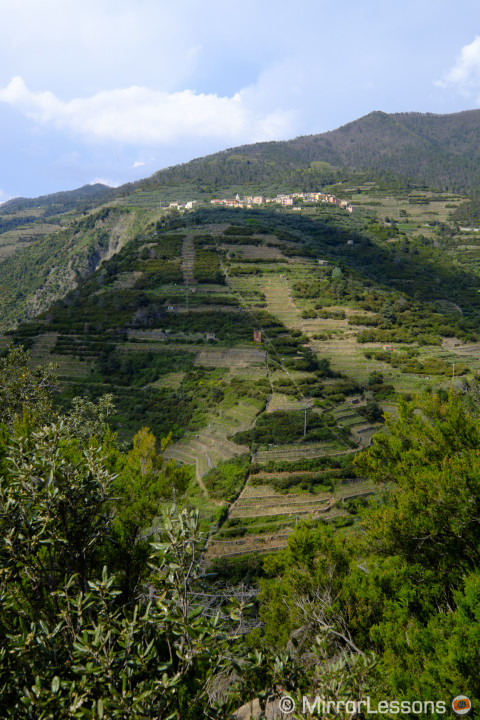
Personally, I have never encountered a problem like this one since I started using X-trans sensor cameras. Note that even though Adobe recently included the film simulation modes within its camera profile options, Lightroom and ACR aren’t the best software to read and develop Fuji RAF files. There are some good alternatives like Iridient Developer or PhotoNinja that are capable of reading the RAW files better especially concerning sharpness, which is Lightroom’s weakness (also with other RAW file types).
You can also visit these additional E-M1 galleries:
You can also visit these additional X-T1 galleries:
Autofocus and Performance
Both cameras have very good continuous shooting capabilities. Concerning the AF, the OM-D E-M1 has a more complete and advanced autofocus system.
The OM-D E-M1’s autofocus is among the quickest you can find on the mirrorless market. In addition to its 81 contrast detection points, the sensor includes 37 phase detection points that will work in AF-C and tracking mode. The camera is really fast and tracks subjects very well. Plus, its phase detection capabilities allow for the use of Four Thirds lenses via an adaptor without losing too much AF speed.
The E-M1 can shoot up to 10fps in AF-S mode and up to 9fps in AF-C (since firmware 3.0). The buffer capabilities are among the best I’ve used on a mirrorless camera.
The only weak point of the E-M1 autofocus is in situations were there are small lighted points in the background, like some lights for example. Depending on the distance and the overall light situation, the camera can tend to not focus right even if you see the AF lock confirmation on the EVF or LCD screen.
Fujifilm has been known for its slow autofocus since the X100 and X-Pro1 but the latest cameras releases (X-E2 and X-T1) plus the various firmware updates for both cameras and lenses are proof that the company is rectifying that statement. The X-T1 has a very good autofocus in both AF-S and AF-C with 49 AF points (9 being phase detection points). It does not beat the E-M1 mainly because it lacks tracking capabilities, which can be very helpful in various situations. The AF also performs surprisingly well in low light too.
From a continuous shooting speed standpoint, the camera can shoot up to 8fps both in AF-S and AF-C which is excellent. Just make sure to use the fastest SD cards availables (the X-T1 is the first camera compatible with UHS-II standards) as the buffer capabilities won’t be as good otherwise.
The X-T1 autofocus can struggle sometimes in low light situations. It will occasionally give you a red rectangle alert meaning that the AF isn’t locked. But that happens with every mirrorless camera I’ve tested.
Both cameras proved capable of handling difficult light situations such as a contemporary dance show.
In-Depth articles about the E-M1 autofocus:
In-Depth article about the X-T1 autofocus:
The overall performance of the two cameras is very good. But there is a very important difference concerning stabilization.
The E-M1 features the impressive Olympus 5-axis stabilization. It can take shots at shutter speeds as slow as 1 second or even less if you steady your body against a wall or pole. More than once I decided not to use my tripod for night shots as the 5-axis stabilisation allowed me to keep my ISO low and my aperture fairly closed.
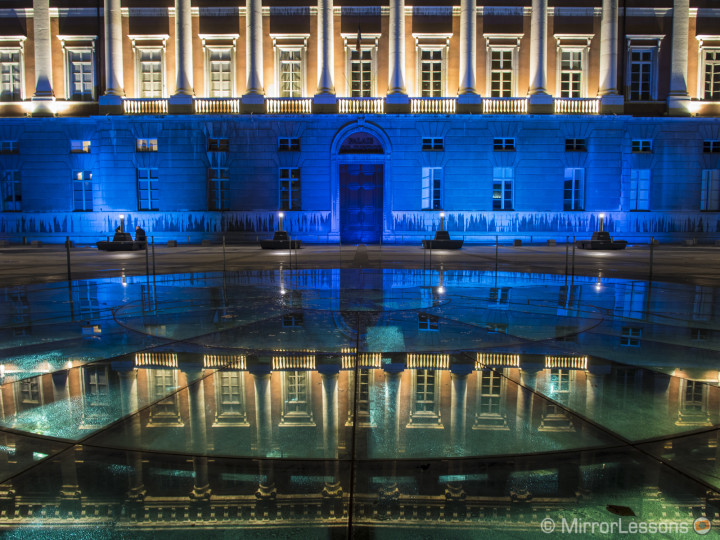
The X-T1 doesn’t have in-body stabilisation and has to rely on the OIS lenses. I haven’t tried all the optically stabilised Fuji lenses but from what I’ve seen so far their OIS is as good as those of many other brands. I got very good results with the XF 10-24mm but I couldn’t reach the same extreme results I got with the E-M1 simply because it is a very different technology. I am confident about shooting hand-held down to 1/10s mostly. With a medium focal length I would say 1/20 or 1/30s.
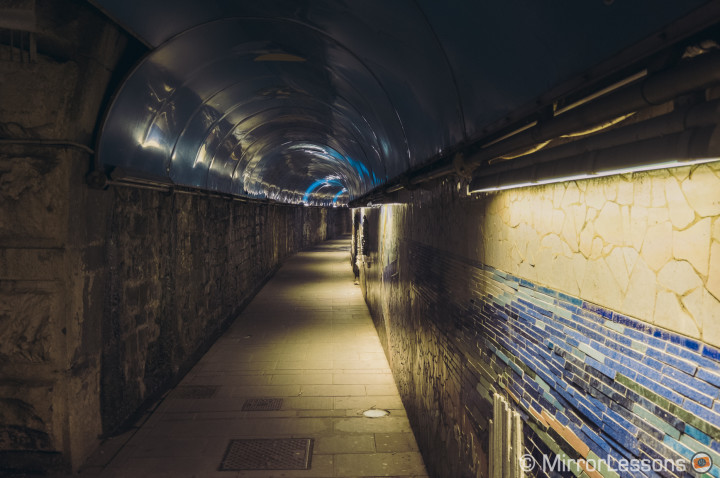
Video Capabilities
Neither camera is known for its video features.
The E-M1 video mode has been slightly improved over the E-M5 (better bit rate now up to 24mbps) and allows you to shoot in Full HD with manual control but at only 30fps (no european 25p mode). There is no way to completely control the audio manually, and there are only three levels available (low, standard and high). It has a mic input for an external microphone. There is also a time-lapse function that will create a 720p movie. Its in-body stabilisation works great for hand-held shots but can give you some sort of “jello” effect for movies. Some movie effects can be applied, including some of the art filters.
The Fuji X-T1 can shoot in Full HD up to 60fps and at a higher bitrate (36mpbs average) which gives a smoother result when panning or shooting action. Also if you bring it back to 30fps while editing the footage, you will get a good slow motion effect. With the firmware 3.0 release, you can now control the settings manually. The camera also has a mic input socket and you can use the film simulation modes to give the footage different look as for still images.
Both cameras can suit you fine for casual video shooting but I wouldn’t consider any of them for more serious video recording.
Other features
Both cameras offer manual focus assist options but the X-T1 has clearly taken a step forward here.
For manual focusing with the E-M1, you can choose between peaking (white or black edges) or 2x magnification. When peaking is selected, the frame rate of the EVF slightly decreases. The peaking is accurate but to be 100% sure especially when using fast aperture lenses, the 2x magnification is more precise.
When it comes to manual focusing, the X-T1 is two steps ahead. Not only does it feature peaking (three colours) and image magnification, but it also offers some Fujifilm proprietary technology. The first is the digital split image option and the second is the dual view mode. The latter is probably the most effective manual focus assist I’ve ever used. Taking advantage of the big EVF, this mode shows you the full size of your composition on the left and on the right a 100% magnification of the area where the focus point is. It is really very easy to manually focus with the X-T1. Because of its big and very detailed EVF you could probably rely on your eye alone. But if you are looking for some extra features, you can’t find anything better than the options provided on the X-T1.
The two cameras distinguish themselves from each other when you look at their extra features.
The E-M1 has a unique feature called Live Bulb (Or Live Time). It allows you to have a preview of a very long exposure on the LCD or EVF. This is a great feature for light painting for example.
It also features the Olympus Art Filters (11 in total) and a new colour creator function that allows you to set the saturation and Hue of your pictures using the two main dials. You can also use the two main dials to change highlights and shadow curves.
The camera also has a dedicated HDR bracketing function (up to 7 frames and 2ev) and an HDR mode for in-camera JPG results. It features a multiple exposure option (2 frames) and interval-shooting capabilities.
The X-T1 features some creative advanced filters, has a multiple exposure and panorama mode that work very well and give in-camera results (JPG only for the panorama mode). It also has an interesting silent mode and a very good in-camera RAW conversion.
It doesn’t include in-camera HDR and bracketing is limited to 3 frames only. It has a dedicated time-lapse mode.
In September 2014, Olympus released the firmware update version 2.0 for the OM-D E-M1 that adds 8 new features including Live Composite, Keystone Compensation and Tethering.
In December 2014, Fujifilm released the firmware version 3.00 that adds several new features to the camera including electronic shutter, Classic Chrome picture profile and many other things.
Both companies are doing a great job with firmware updates on both cameras!
Both the E-M1 and X-T1 include Wi-Fi capabilities.
You can connect the camera wirelessly to a smartphone or tablet, upload your pictures or control the camera remotely. The relative apps on the smart devices allow manual control which is one of the most interesting things. The Fujifilm Camera remote app is probably the most straightforward to use but cannot work in landscape mode if you use an iPad for example.
As for the battery life…
The E-M1 has a more than reasonable battery life but if you use it extensively all day, it could run out by the afternoon.
The X-T1 has a shorter battery life and during a full day of shooting the first will end up empty at around midday.
Conclusion
The OM-D E-M1 and the X-T1 are certainly the two best mirrorless cameras to date along with the Panasonic GH4, but regarding the latter I am still reviewing it so I cannot compare yet. I can certainly say that both cameras can be used for professional work as they feature great image quality and very high quality lenses.
The E-M1 is probably the closest to perfection of all the cameras I’ve used so far. Its ergonomics, functionality, 5-axis stabilisation and great image quality are the reasons why it is my camera of choice for my professional work. Also, not only is the Micro Four Thirds system the smallest in the mirrorless category but it also offers the widest selection of lenses, which includes Lumix, M.Zuiko, Zuiko, Leica and other third party manufacturers. There is a lens for almost every need. The accessories department is also pretty much complete.
The X-T1 on the other hand shows all the potential of the Fujifilm X system. Its wonderful EVF, manual control dials and great colour rendering are certainly the main reasons to go for it. The lens system is growing and while it doesn’t reach the same vastitude of the MFT system, it is certainly closing the gap quickly. The Fujinon lenses, both primes and zooms, are all of extreme high quality. The only thing that the system is lacking for now, as opposed to the Olympus system, is a good wireless portable flash system.
Choose the EM-1 if:
- You need a wide range of lenses to choose from
- You often work in low-light conditions where the 5-axis stabilisation can be of real use
- You are looking for perfect ergonomics and a functional button layout
- You are looking for the smallest professional camera/lens combination
Choose the X-T1 if:
- You want the best EVF on the market with the most complete offerings for manual focusing
- You love changing the main settings with manual dials
- You want the perfect compromise between a full frame and a MFT camera
- You want to trust your ISO up to 6400 and have better dynamic range to work with
Reviews
You can also read our reviews and related articles about the two cameras:
